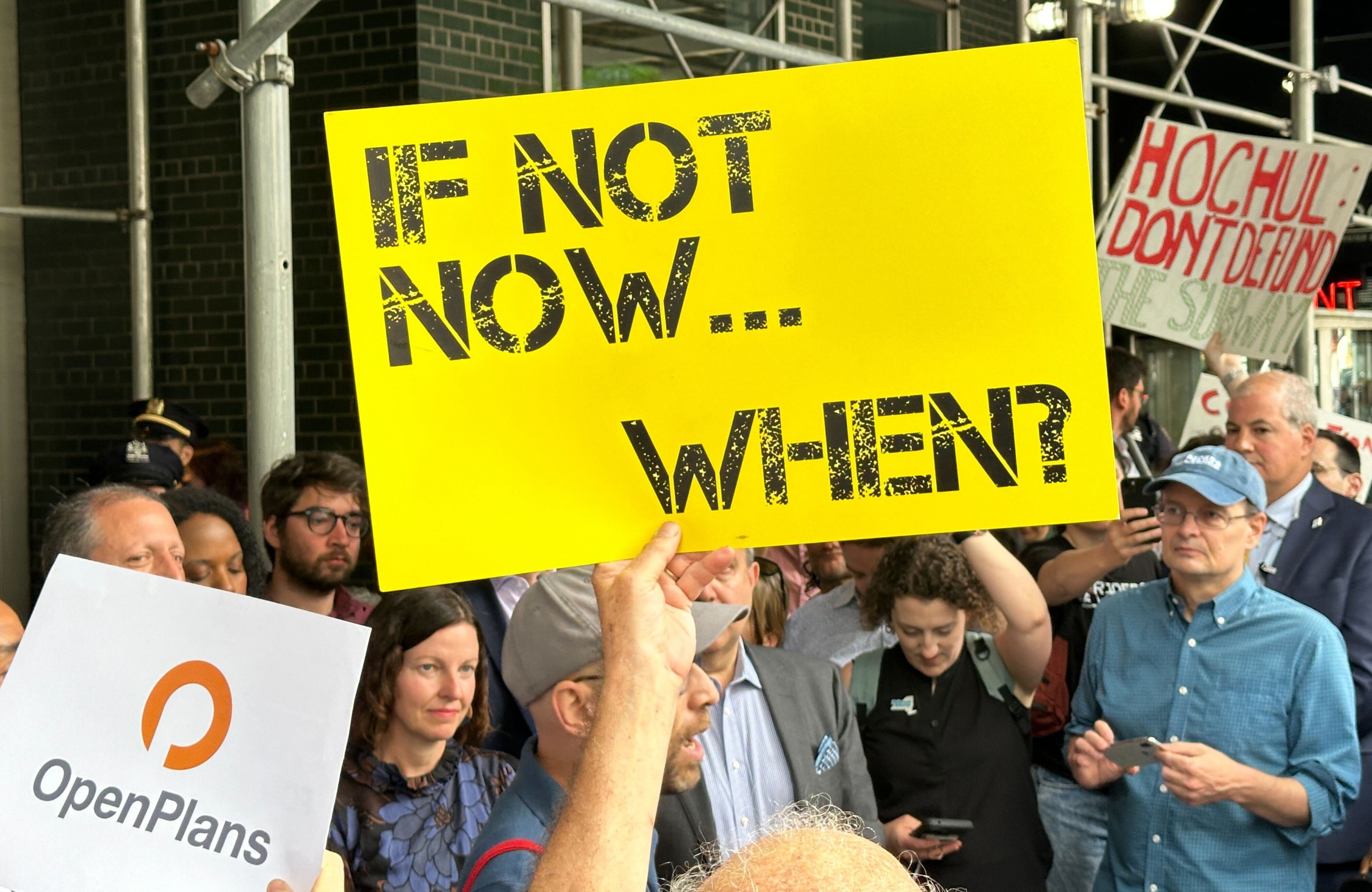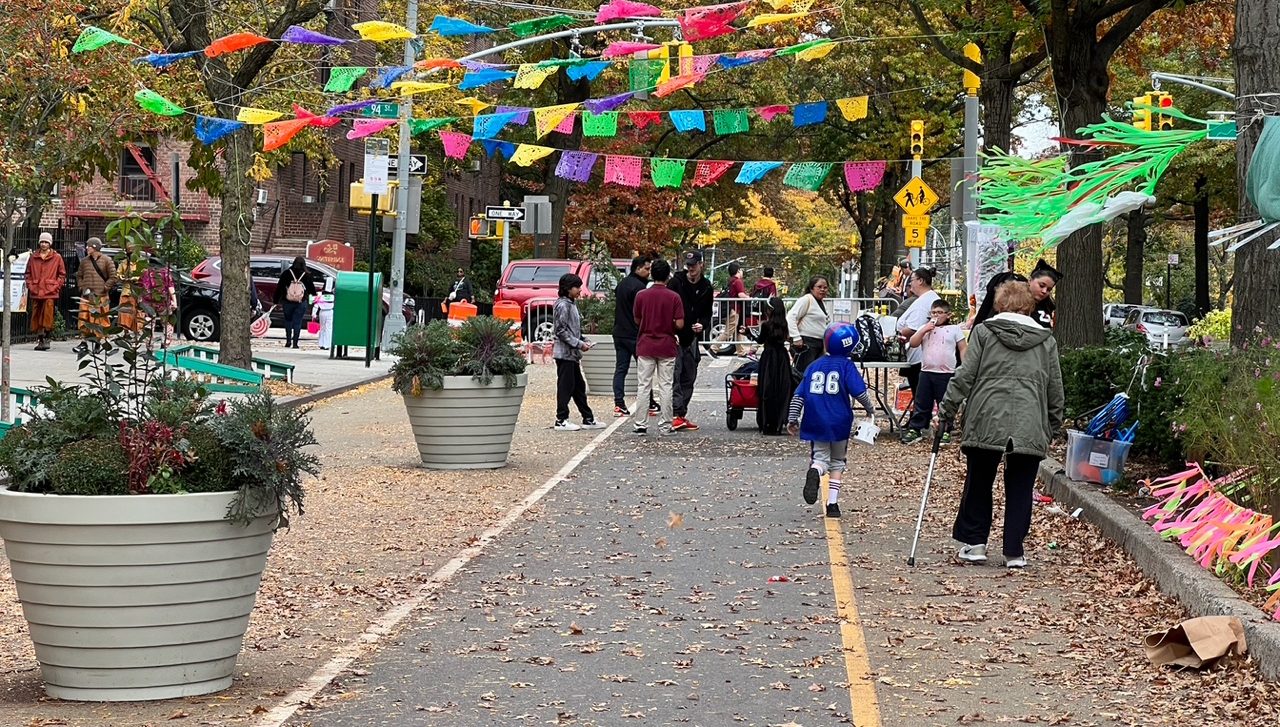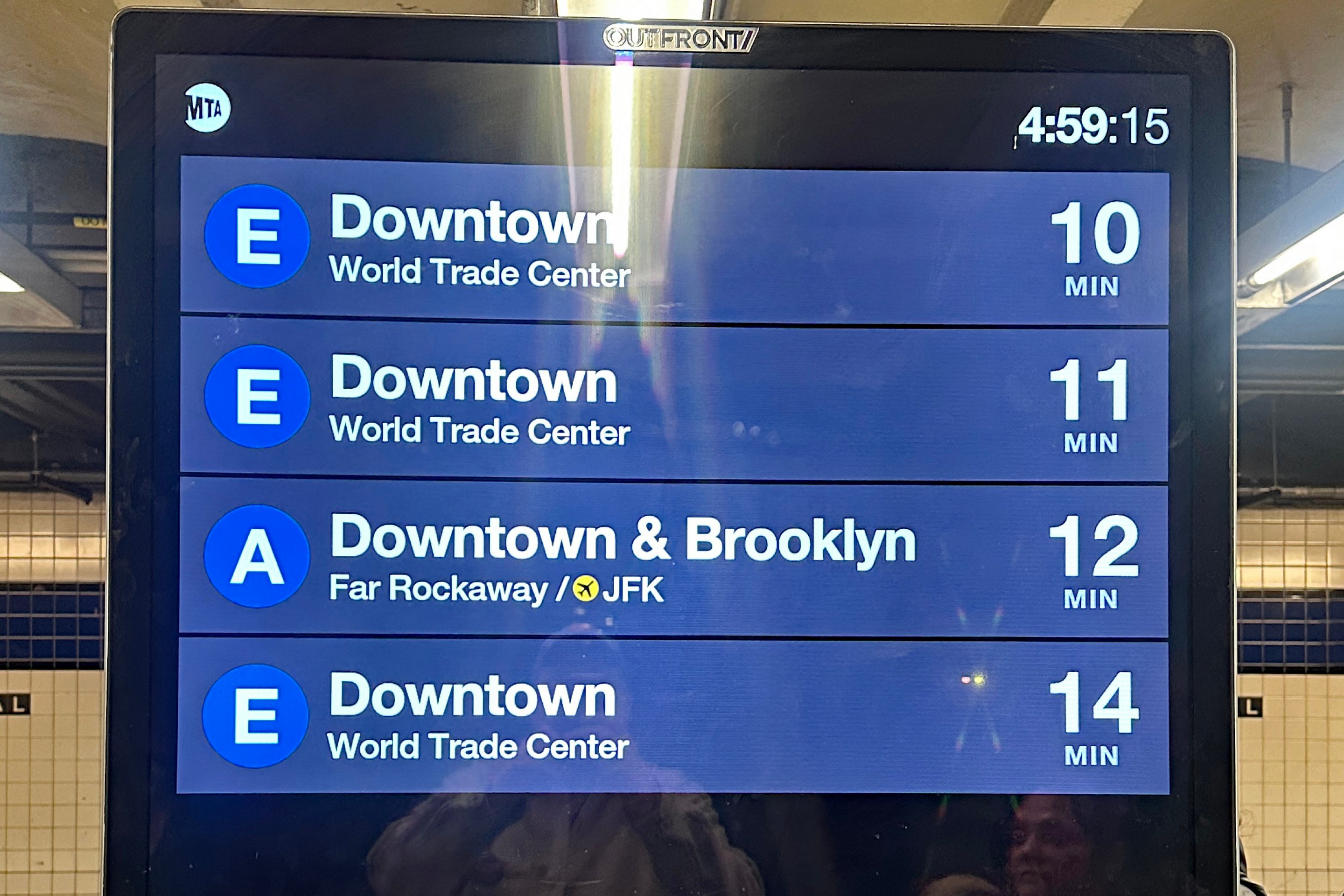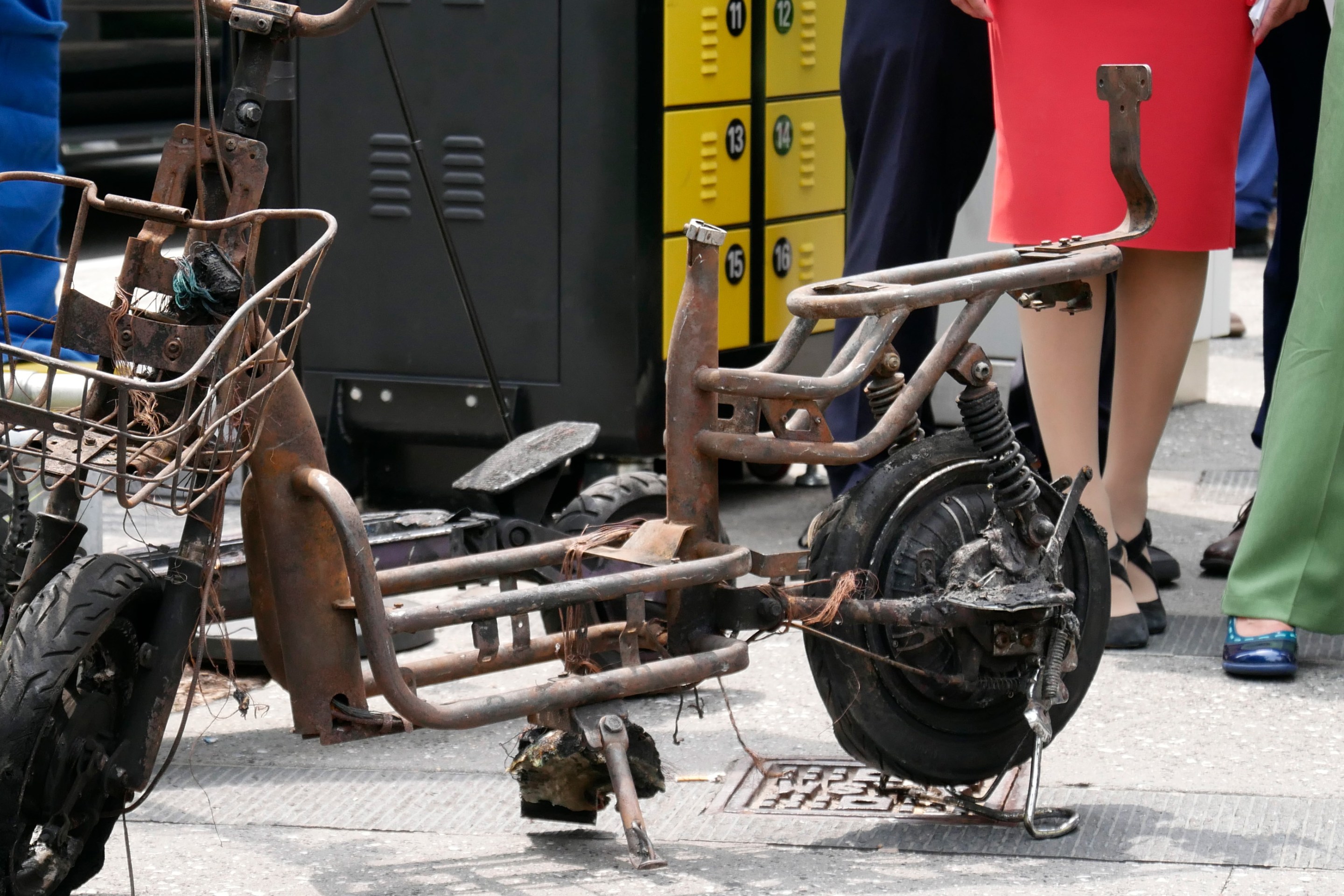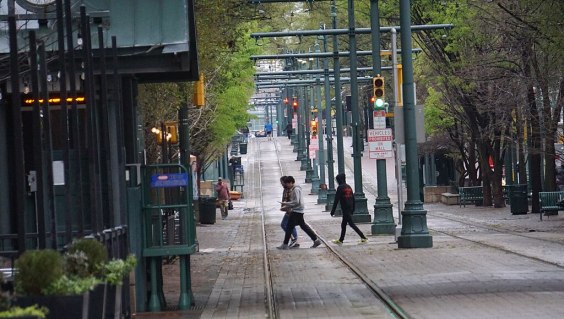It's the pause that distresses.
Gov. Hochul is now trying to save face by un-pausing congestion pricing with a reduced-price toll that is less beneficial for the city, but one she hopes will be up and running before President-elect Trump is sworn in and can make good on his promise to central business district tolling.
According to officials familiar with discussions between the federal government and state, Hochul intends to submit a $9 peak toll for approval by the Federal Highway Administration, which previously signed off on the $15 toll plan that Hochul suspended in June in what appeared to be a panic move to stave off political blowback before an election.
Like her pause of congestion pricing itself, Hochul's bid for a lower toll, which was first reported by Politico, comes despite the governor's previous support for the $15 toll created by her handpicked Traffic Mobility Review Board and approved months later by her handpicked MTA Board.
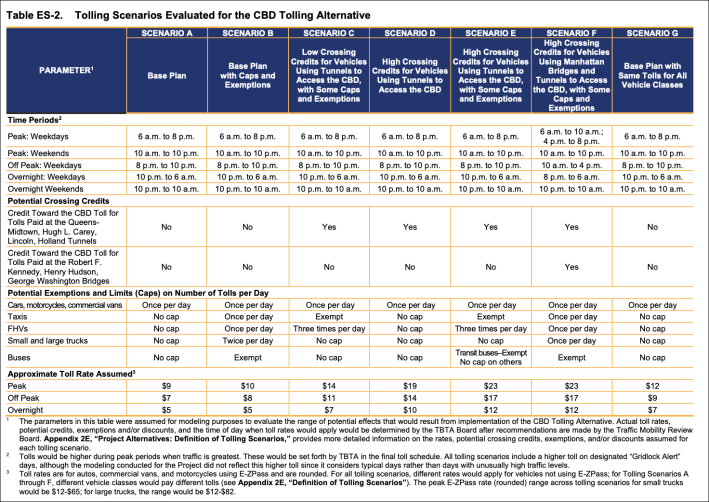
A $9 peak toll was one of seven tolling scenarios in the environmental assessment for congestion pricing that the federal government accepted in 2022. But that so-called Tolling Scenario A included no toll credits for drivers entering the central business district via bridges and tunnels that are already tolled. And it did not include a cap on how many times per day taxis would be socked with the toll to enter Manhattan south of 60th Street.
Both of those tweaks were part of the $15 peak toll plan that the Traffic Mobility Review Board recommended last year and the MTA adopted: Drivers would get $5 discounts if they used the Queens-Midtown Tunnel, the Lincoln Tunnel, Holland Tunnel and Brooklyn Battery Tunnel; low-income drivers would get a 50-percent peak toll discount after their 10th trip into the zone per month; and taxi passengers not drivers would pay $1.25 per ride in a yellow cab or $2.50 in an Uber or Lyft.
Hochul's new plan has credits and discounts and taxi passenger charges, but it's unclear how much each will be
The new tolling structure will also still need to include the mitigation efforts the MTA agreed to enact, such as devoting $150 million to various pollution mitigation efforts in the south Bronx and other areas where the MTA forecast predicted increases in truck traffic as a result of the toll.
The federal government will need to review any new toll structure to make sure it does not create any new impacts. But officials familiar with the process said that they expect the review will need less new analysis than the $15 toll and could be done in a matter of days instead of weeks or months. Sources said the toll would also be phased in over time, starting at $9 and eventually getting up to $15.
State law requires congestion pricing to raise $15 billion for the 2020-2024 capital plan through bonding. The $15 toll got federal approval despite the fact that it would raise about $900 million per year, because the MTA made the case that it could still borrow enough money backed by the tolls to fund $15 billion in capital improvements.
Is Hochul's $9 good enough?
Under state law, congestion pricing must raise enough money to
"fund $15 billion for the 2020 to 2024 MTA capital program." It's generally been assumed that $1 billion in annual toll revenues would create enough revenue to allow for $15 billion in bonds for capital reconstruction.
Transportation economist and traffic modeler Charles Komanoff ran the numbers for a $9 peak toll and found that it could raise $1 billion per year — though that would drop to $950 million if Hochul follows through on her talk of exempting municipal workers who drive to lower Manhattan. A proposed $9 could raise as much as $1.2 billion per year if it included a new $5 surcharge on Uber and Lyft rides instead of the previously approved $2.50 surcharge, Komanoff said.
In addition to raising money for transit, congestion pricing would reduce traffic in the central business district by double-digit percentages, adding an incalculable improvement in quality of life, advocates have said. The FHWA had said that traffic volumes would drop by 17 percent once all the transit improvements envisioned by congestion pricing had kicked in.
But according to Komanoff's numbers, a $9 toll would dramatically reduce that improvement inside the Central Business District, with initial traffic speeds only improving by about 6.4 percent and rising to only 12.9 percent once all the transit improvements have been completed.
"This is what happens when you only try to do the bare minimum — raise $1 billion for the subway," said Komanoff. "You lose other benefits. Most noticeably, you don’t get the immediate traffic speed gain that a $15 toll would give."
It's unclear if the lower toll can be implemented immediately or if it will require more action from the MTA Board, which signed off on Gov, Hochul's pause earlier this year. The Board could in theory vote on a $9 peak toll and other discounts and credits at its November meeting, which will be held on Nov. 20.
Getting the toll over the line before the inauguration of the 47th President is of the utmost importance for the MTA. President-elect Trump has vowed to "terminate" the toll when he takes office. It's unclear what he can do if the toll is up and running when he takes an oath of office on Jan. 20, 2025.
"If the state and the federal government and the city all enter into a big agreement and the environmental review process has been followed, that leaves you some legs to stand on," said Justin Balik, a former state transportation official who now serves as the state program director for Evergreen Action. "I don't think there's a lot of precedent for political hostage taking and presidential involvement in it."
The MTA has a desperate need for the $15 billion that congestion pricing is supposed to raise for the 2020-2024 capital plan. The agency has already paused $16 billion worth of work it was supposed to contract out with the money it was preparing to raise from congestion pricing. Knocking congestion pricing out of the agency's financial plans would also add almost $1 billion to the MTA's expected deficits between 2024 and 2027.
It's also unclear if advocates will support a lower toll. Initial statements after Politico's report focused on the need to get congestion pricing over the finish line rather than what the price should be.
“It’s more important than ever that we start congestion pricing immediately, before Trump can block it," said state Senator Andrew Gounardes (D-Brooklyn). "The time to commit to better public transit, less traffic and cleaner air is now. Trump has made clear that he wants to block funding that would better connect New Yorkers to jobs, schools and each other, and which would also protect our climate. Let’s prove we’re serious about investing in the infrastructure that working New Yorkers rely on and turn the cameras on.”
